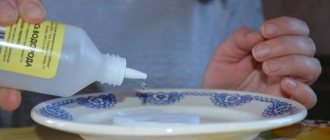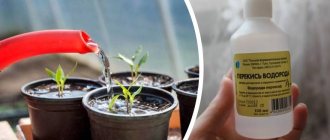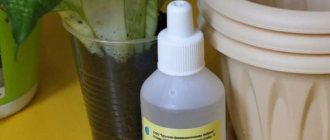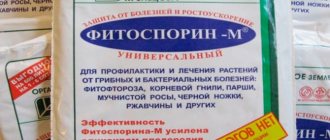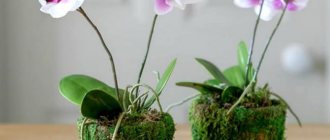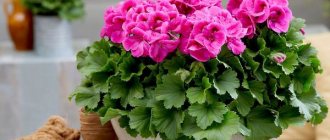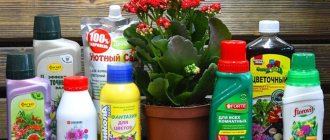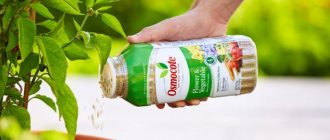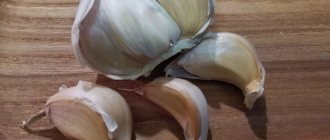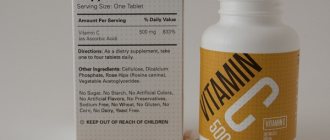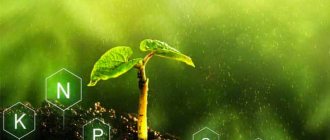Why do indoor plants need hydrogen peroxide?
All housewives use the product as a preventative and for the treatment of certain diseases. Below you can familiarize yourself with the scope of use of hydrogen peroxide for indoor plants.
Why do indoor plants need hydrogen peroxide?
- Prevention of black leg and root rot
- For soil treatment in case of the appearance of fungi, mold and moss
- For soaking seeds to eliminate fungi and viruses
- For the treatment of diseases associated with viruses and fungi
- For processing and disinfecting new soil before replanting plants
- For the treatment of the initial stages of certain ailments and for the purpose of revitalizing plants
Solution
Restrictions for feeding with iodine
It is recommended to apply fertilizers from the end of February until flower buds appear. In spring, you need to pay special attention to indoor plants, because this time is characterized by an active growth phase. In the spring months, iodine is especially useful for house flowers.
Iodine should absolutely not be used in the following cases:
- If the flower has recently undergone a transplant. The plant should take root and develop roots well in the new soil.
- Be sure to water the plant before feeding. You cannot pour iodine solution onto dry soil.
- Iodine is more often used for disease prevention rather than treatment. If the plant looks weak and is withering, you need to identify and eliminate the causes, and then feed it.
Indoor plants are a real outlet for flower lovers, especially during the cold season when the garden is in hibernation. With proper care of green pets, you can turn your home into a real flower paradise. It is important to fertilize indoor plants with iodine in a timely manner and not allow its excess. Then the plants will thank the gardeners with lush foliage with inflorescences and a pleasant fragrance around the room.
Every lover of indoor plants wants to see their pets healthy, lush and blooming. To achieve this result, proper and constant care is necessary, which includes: timely watering, removing dead leaves, replanting and fertilizing.
How to feed flowers with hydrogen peroxide?
Peroxide can be used if there are minor disturbances and plants begin to wilt. However, in advanced cases, the remedy may not work.
How to feed flowers with hydrogen peroxide:
- It is best to use living water for watering plants. For this purpose, melted milk is usually used. However, not all housewives have time to freeze and defrost liquid for watering plants.
- Therefore, it can be prepared from tap water. To do this, add a couple of drops of hydrogen peroxide to the liquid.
- Do not store the product for a long time, as oxygen and hydrogen ions disappear very quickly, and the water becomes completely inactive.
Solution
How to use peroxide for flowers?
In a cool and dark place, if all conditions are met, hydrogen peroxide solutions can be stored for a long time.
Alevtina Korzunova. Nature that heals: hydrogen peroxide, turpentine, kerosene. year 2013.
To prepare a solution with hydrogen peroxide, you need to take clean tap water. Let it sit for 6-8 hours. Next, you should start preparing the solution.
You only need to use hydrogen peroxide to create an aqueous substance with a 3% solution. Additional components are possible depending on the situation. The proportions for preparing the solution must correspond to the goals pursued.
The peroxide substance is used for watering, fertilizing, spraying and soaking seeds. It is necessary when transplanting and picking plants.
Important! An aqueous solution with peroxide should be prepared immediately before use. In this case it will give the best results.
Hydrogen peroxide for indoor plants: methods of application
It is recommended to use peroxide during transplantation to treat the roots. As soon as you notice that the plants are starting to wilt, we recommend replanting them in new soil and pot.
Hydrogen peroxide for indoor plants, methods of use:
- You can use the old one, but first wash it with a lot of soda and pour boiling water over it. In addition, an antiseptic can be used to eliminate pathogenic microorganisms that remain on the walls of the vessel.
- Next, you need to thoroughly rinse the roots of the plant, remove damaged areas, black areas, and soak in the solution for 15 minutes. To do this, you will need 20 ml of 3% peroxide per 1000 ml. Only after this is transplantation into a new flowerpot carried out.
- Peroxide contains a large amount of nutritional components and has a good effect on the condition of the soil. Therefore, it is recommended to water once a week with a weak solution. To do this, 15 ml of 3% peroxide is dissolved in 1000 ml. Under no circumstances leave this liquid standing; after just a few hours it loses its properties, as oxygen evaporates and hydrogen along with it. Accordingly, water becomes the most common and does not have universal properties. It becomes absolutely useless for feeding.
- Hydrogen peroxide is widely used to treat bulbous plants. When transplanting to open ground or into a pot, it is necessary to soak the bulbs in the prepared solution for 30-40 minutes. It is necessary to dissolve 10 milliliters of the prepared product in a liter of water and mix. Remember, the solution should be at room temperature or slightly warmed. Be sure to remove all scales, dark spots, and places that have begun to rot from the surface of the bulbs.
Spraying
✅ Preparation of the solution
Tap water for plants must be pre-settled, even if it is planned to add peroxide before watering. It is left in an open container for at least 6-8 hours so that the chlorine evaporates from it. Rainwater that already contains peroxide will not require such treatment.
A bottle of hydrogen peroxide can be purchased at a pharmacy. Before treating plants, the composition is heavily diluted with water. At the same time, for different tasks the ratio of liquids may vary:
- For normal daily watering, add 2-3 drops of 3% composition to 1 liter of water;
- For watering or spraying, add 2 tbsp per 1 liter of water every 5-7 days. spoons of peroxide;
- For preventive treatment of soil, add 3 ml per 1 liter of water;
- For pre-planting soil treatment, use 30 ml per 5 liters of water.
If peroxide is needed to prevent diseases or treat them, this remedy is sometimes mixed with other compounds. So against late blight, use a solution of 30 drops of iodine and 3 tbsp. spoons of peroxide per 10 liters of cold water.
How to prepare the solution?
First you need to prepare the water. It can be taken from the water supply, but it should be left for 6-8 hours to get rid of the chlorine. Although some gardeners use rainwater, since it already contains peroxide, and it is known to have a positive effect on the condition of houseplants.
So, after preparing the water, you need to buy peroxide. It should be diluted with water in certain proportions, since a varied dosage is used, which depends on the purpose of the solution:
- for daily watering you will need to add only 2-3 drops of 3% peroxide per 1000 ml of water;
- for preventive purposes, the solution is used for soil treatment, and its preparation requires only 3 ml of peroxide per 1000 ml of water;
- if you need to treat the soil immediately before planting a crop, then you need to take 30 ml of peroxide per 5 liters of water.
It is worth emphasizing that peroxide solution is often used as a prophylactic against various diseases, as well as in their treatment. With its help, young seedlings become stronger, and wilted plants begin to grow better.
For example, if you need to destroy late blight, you will need to dilute 30 drops of iodine and 3 tbsp in 10 liters of cold water. spoons of peroxide.
Hydrogen peroxide for watering indoor plants: benefits
Peroxide does not contain any nutritional components or microelements. However, as mentioned above, hydrogen and oxygen ions are dissolved in it, which improve the quality of the soil.
Hydrogen peroxide for watering indoor plants, benefits:
- That is why it is recommended to use peroxide to enhance the effect of possible fertilizers and minerals. For these purposes, dissolve 10 ml of peroxide solution with a concentration of 3% in 1000 ml.
- The day before feeding the plants with fertilizers or complex substances, it is necessary to water them with a slightly acidic peroxide solution.
- If you haven't thought about it, you can water it the next day. The fact is that oxygen and hydrogen ions enhance the effect of nutritional components, so they are better absorbed.
Treatment
Precautionary measures
Although hydrogen peroxide has virtually no contraindications and can be used to care for any plants, it must be used rationally. The composition of this solution resembles rainwater, so if the dosage is observed, it is not capable of harming the flowers.
In order for peroxide to produce the maximum possible effect, you need to remember the following rules for its use:
- Hydrogen peroxide is always diluted with water in the proportion required for a specific task;
- The solution for each use must be freshly prepared;
- Before watering, the soil in the pot is cleared of fallen leaves or buds and other plant debris;
- People usually try not to mix peroxide with other nutritional compounds unless a specific task requires it;
- If the roots or above-ground parts of the plant are covered with a light coating, stop watering with peroxide for a while;
- You should not use the solution too often - to maintain the health of plants that are watered about every other day, it will be enough to apply it only once a week.
How to feed geraniums with peroxide?
Geranium is a stunning houseplant that produces beautiful flowers. Peroxide in this case is used to stimulate growth, as well as to protect against fungi and bacteria. It helps strengthen the immune system.
How to feed geraniums with peroxide:
- To feed this plant, you need to know the concentration of the solution. Be sure to choose rain or well water; filtered water is not suitable, as it does not contain any trace elements and minerals.
- To water the plant, you need to dissolve 40 ml of peroxide in 1000 milliliters of water. Treatment must be carried out in the morning and evening. Before fertilizing, it is recommended to water with plain water to moisten the soil. This helps to get rid of possible burns and unpleasant consequences.
Fertilizers
Scientific facts about fertilizer
In open ground, iodine comes from precipitation, so crops growing outside receive this substance naturally, at least in small quantities. At home, you need to saturate the soil yourself. Scientific experiments were carried out, during which it turned out that with proper feeding, all indoor flowers reacted positively: the plants recovered faster from illnesses, the buds became more lush and beautiful, and the color of the leaves was brighter.
There is no exact explanation why iodine as a supplement gives such excellent results. Scientists have suggested that this element regulates the functioning of enzyme systems, thus improving metabolism in plants. But no matter how much controversy there is around feeding with this element, the fact is obvious: the benefits of this substance are enormous.
Iodine is able to “reanimate” plants even in the most hopeless cases. Research was carried out on indoor flowers infected with diseases. Here are some examples:
- The use of iodine as a fertilizer literally “extended the life” of anthurium. The plant had already lost all its leaves, but after several waterings with the solution, recovery occurred. After just a couple of months, the anthurium became a healthy, beautiful flower with lush green leaves.
- Red raised spots appeared on the leaves of gladiolus and snapdragon. The fungus has already spread throughout the entire stem. The use of iodine saved the flowers from death; not a trace of “rust” remained.
- An experiment was conducted with chrysanthemums affected by nematodes. Feeding flowers helped get rid of harmful parasites.
How to feed geraniums with iodine and peroxide?
The combination of iodine and peroxide has proven itself well. The liquid helps cope with infections and pathogenic microorganisms.
How to feed geraniums with iodine and peroxide:
- It is necessary to dissolve 20 ml of peroxide in a liter of water and add 2 drops of an alcohol solution of iodine.
- In no case should the concentration of ions be exceeded, otherwise you risk burning the roots. The resulting product is poured under the root.
- Under no circumstances should you get it on the stem or leaves, as this may cause burns.
Treatment
The use of hydrogen peroxide for seedlings and seeds
Peroxide is an excellent preventative. With its help you can protect seedlings and seeds of various crops from pests and diseases.
However, this process has its own subtleties, which are as follows:
- When soaking seeds before sowing into seedlings or open ground, peroxide is used in its pure form. That is, there is no need to dilute it with water. The grains are immersed in a 10% peroxide solution for half an hour, after which they are removed and dried well. If necessary, peroxide can be replaced with potassium permanganate concentrate.
- Peroxide can be used as a seed growth stimulator. In this case, a 0.4% solution of the drug is used. However, soaking can only be done if the seeds do not contain pathogenic microorganisms or fungi, and were not collected from diseased plants. The grains are left in the preparation for 12 hours.
- You can speed up seed germination using 30 drops of 3% peroxide per 1 glass of water. Pour the grains into the liquid and leave for 1-2 hours. This product softens the protective seed coat.
The seedlings are treated with the solution after picking. The drug is prepared by mixing a bottle of 3% peroxide with 2 liters of water. Fertilizer can be sprayed or poured into each plant at the root.
Such procedures perfectly disinfect the soil, destroy pathogenic microflora and prevent the development of various phytopathologies.
How to feed an orchid with peroxide?
An orchid is a rather capricious plant that does not always respond well to fertilization. It is very sensitive to changes and temperature changes, so you can use simple methods to improve growth and flowering.
How to feed an orchid with peroxide:
- To feed the crop, it is best to use foliar feeding. To do this, you need to dissolve about 40 ml of peroxide in 500 ml, pour it into a spray bottle, and sprinkle the leaves.
- It is believed that green mass absorbs nutritional components better, so plants respond best to such fertilizing. If the orchid begins to hurt, you can use a medicinal solution.
- To do this, dissolve 50 ml of 3% peroxide in 1000 ml and add one drop of iodine. Transfer the mixture into a spray bottle again and apply to the green mass. Try not to get the product on the flowers, as dark spots may remain.
- As in the previous recipe, it is not recommended to increase the concentration of iodine and peroxide so as not to burn the leaves. It is advisable to carry out such treatment once every 6 days. It is believed that timely spraying allows disinfecting leaves and suppressing the growth of pathogens, bacteria and fungi.
Treatment
How to prepare a solution for feeding with iodine?
It is best not to experiment with your green pets, but to carry out disease prevention in a timely manner. Iodine will become an indispensable assistant for caring for plants. This element actively takes part in synthesis and has antiseptic and antifungal properties. The solution can be prepared at home or purchased special preparations from the store.
How to use iodine so as not to harm the plant? To prepare the fertilizer, you will need 7 liters of water and 20 ml of iodine. The liquid needs to be mixed and watered over the walls of the pot. This solution stimulates growth and protects against powdery mildew. You can cure indoor flowers affected by late blight by adding hydrogen peroxide to the mixture.
If the plantings do not bloom for a long time, a mixture of one liter of water and 1 drop of iodine will help. It must be poured with extreme caution so that the solution penetrates only into the soil without touching the leaves and roots, otherwise the mixture may burn them. This fertilizer is very useful for geraniums; after such watering, bright lush flowers will soon appear on this beautiful plant. The procedure must be repeated every 10 days. It is enough to use no more than 50 ml of liquid at a time. This solution is also excellent for pelargonium.
How to understand that you need to feed indoor flowers with hydrogen peroxide?
There are several signs that will let you know that your indoor plants need feeding.
How to understand that you need to feed indoor flowers with hydrogen peroxide:
- The leaves began to turn yellow
- Culture is not developing well
- Growth slows, flowers fade, petals fall
- Plants are susceptible to various diseases
It is for such plants that it is recommended to use peroxide. Almost all indoor plants are in a limited space. They are not exposed to precipitation, the soil is gradually depleted, and all mineral and organic components are absorbed from it. After a few years it becomes completely empty. Therefore, there is no need to hope that plants will grow well and feel great for several years. Constant feeding is required, and more careful care than crops that grow in open ground. One of the cheapest products is hydrogen peroxide. This product can be used for any indoor plants, regardless of their method of propagation and flowering.
Treatment
Extra Bonus
It is interesting that the use of peroxide alone has a positive effect on indoor flowers, and in combination with iodine tincture, it will also protect against the attacks of insect pests such as midges, scale insects, spider mites, etc. For the nutrient solution, add 15 drops of iodine per half a liter jar of water with 10 ml of peroxide.
Hydrogen peroxide is also often used in combination with regular granulated sugar, for which ¼ cup of a 3% pharmaceutical solution is mixed with the same volume of sugar and poured into a liter jar of water. After thoroughly stirring until the grains are completely dissolved, the composition is used for irrigation, which, in addition to ozone, will also saturate the soil with glucose. This approach is used infrequently, alternating irrigation with traditional ones.
It has been noticed that peroxide has a beneficial effect not only on adult indoor crops, but also on seeds (they are soaked for 30 minutes in a clean pharmaceutical solution to treat pathogenic microflora). In addition, it is useful to immerse the roots of flowers when transplanting, which will protect against fungal infections.
In addition to the fact that hydrogen peroxide is a very effective drug that can significantly improve the appearance of indoor plants, moreover, it is a completely affordable pharmaceutical product that costs a penny. It is important not to exceed the dosage of the substance and not to be overzealous with watering every day, then the flower will gratefully respond to the care, delighting you with lush buds.
How to feed homemade flowers with hydrogen peroxide and glucose?
Indoor plants respond well not only to fertilizing with peroxide, but also to the addition of glucose. It is believed that this component is simply necessary for normal functioning, sap formation, and the passage of all processes associated with chemical reactions inside plant cells. This is why sugar is often used.
How to feed homemade flowers with hydrogen peroxide and glucose:
- It is necessary to pour 100 ml of peroxide into a 2 liter jar. Add 120 g of sugar to it. Add melted water or tap water, mix thoroughly.
- It is necessary that no lumps of sugar are found in the solution. It is with this solution that plants need to be watered.
- This product can be used not only for application at the root, but also for spraying leaves.
Spraying
Pros and cons of hydrogen peroxide
Advantages and disadvantages
cheapness of peroxide;
profitability (low consumption of solution per plant);
no need to apply additional fertilizers or fertilizing;
possibility of use for therapeutic and prophylactic purposes;
naturalness of the composition;
positive effect on soil composition.
The downside of the drug is, perhaps, the absence of any vitamins or microelements in its composition. Therefore, if there is obvious plant vitamin deficiency, peroxide alone will not be enough.
Hydrogen peroxide for indoor plants: reviews
Below you can read reviews from home plant lovers.
Hydrogen peroxide for indoor plants, reviews:
Irina. Houseplants are often grown, with violets among my favorites. I prefer complex fertilizers, but I do not avoid traditional methods. One of the best is hydrogen peroxide. To get good results, I use a watering with a few drops of peroxide. The oxygen it contains improves root nutrition and prevents the occurrence of various fungal and bacterial diseases.
Veronica. I am an opponent of various complex fertilizers for house plants. Although I still think that growing in conditions without access to nutrients affects the health of plants and their growth. That is why I often use fertilizers. But I try to use folk remedies that almost everyone has in their home. Among them, it is worth highlighting hydrogen peroxide. I apply the solution at the root and also spray the foliage. Helps get rid of spider mites and eliminates small bugs that crawl through the soil.
Eugene. I'm retired, I have an unusual hobby. I love growing indoor plants. Most often I use peroxide for care and feeding. I think this method is one of the best. I fertilize once every 2 weeks. To do this, I dilute 20 ml of peroxide in a liter of water and water it at the root, spraying it with plain water. I definitely use complex fertilizer in spring and autumn.
Spraying
We advise you to read the following articles, from which you will learn how to grow:
- Arugula
- Hot chili pepper
- Asters
- Greenery on the windowsill
- Ginger
Hydrogen peroxide can be used not only for caring for house and indoor plants, but also for preparing planting and sowing seeds. This will come in handy if you are interested in growing herbs or other crops on the windowsill. Hydrogen peroxide is used instead of potassium permanganate to treat the seeds. For this, a ten percent solution is used. It is necessary to soak the seeds in this solution for 30 minutes. The solution softens the shell, making the shell soft, and therefore significantly speeds up the process of germination of grains.
When is it necessary?
Hydrogen peroxide is necessary for caring for home flowers, but it is worth noting that they require an extremely weak solution of this substance. It is strictly forbidden to take pure hydrogen peroxide. When caring for house plants, this substance is used for both root and foliar treatment . Using peroxide, you can treat tools, hands, and pots when planting or replanting plants.
Important! For indoor flowers, you can only use a freshly prepared hydrogen peroxide solution.
Flower growers note that for watering it is enough to add only 2-3 drops of this drug to the water . Active oxygen perfectly displaces chlorine atoms. As a result, the soil is saturated with the necessary elements. After several such waterings, the plants become beautiful, their flowering period increases, they begin to grow actively, and also get rid of various parasites and diseases.
This drug is great for treating fungal diseases. Hydrogen peroxide also has a positive effect on the root system. The roots become stronger and their rotting stops. That is why such a solution is often used as a fertilizer.
Fertilizer and feeding
People often ask in reviews what and when to feed the money tree? This point is very important. Without fertilizers it is unlikely that you will be able to grow a beautiful flower. During periods of dormancy and active growth, it must be fed differently. Fertilizers are applied once a month, starting in April. Since October, its number has been reduced by half. The frequency also decreases. It is important to water the plant thoroughly before fertilizing. This will protect the roots from burns. The next day you need to shower in the morning and evening.
How to feed the money tree? To do this, experts recommend using universal products for indoor plants. There are also special ones on sale that are designed for cacti and succulents.
Feeding rules:
- Dry fertilizers are diluted with either boiled or rain water.
- Additions should not be added while the plant is establishing roots.
- The optimal time for fertilizing the soil is evening.
In order for the money tree to fully develop, it needs nitrogen, potassium, phosphorus and calcium. It is important to remember that both their lack and excess have a negative impact.
Calcium based supplement
Of course, every gardener can go to a specialized store and purchase ready-made fertilizer. However, you can enrich the soil with calcium at home. As you know, this element is contained in eggshells. There are three ways to prepare fertilizer for Crassula.
- The first is to use the shell as a drainage layer. It is poured onto the bottom of the pot 2-3 cm thick.
- The second is to make flour from the shells. Some gardeners use a blender for this. But you can grind it with a rolling pin. However, the shell must be well dried before this.
- The third is tincture. It is done very simply. The shells of five eggs are poured with boiling water (0.5 l). Leave for 7-10 days in a dark place. After this, use it for irrigation instead of plain water.
Fertilizers from the store
If you are interested in how to feed the money tree, you can purchase Gilea fertilizer. Its composition is excellent for succulents. It is popular among flower growers. It is diluted with boiled water at the rate of two caps per liter of liquid. Feeding is carried out only during the period of active growth. Pokon, Effekton DC, Lignohumate, and Uniflor Cactus products have also proven themselves well.
You need to select fertilizers for the fat plant very carefully. It is not recommended to use mineral supplements with large amounts of nitrogen. Its excess will lead to the death of the flower.
Organic fertilizers
How else to feed the money tree? Wood ash! This fertilizer is considered the best for Crassula. It contains relatively little nitrogen, but there is an excess of other substances. There are two ways to use organic matter:
- Mix the ashes with the soil or dig about 2 cm deep.
- Make a solution and water. To prepare it, you will need to take 200 g of ash, pour it with water and leave for 7 days.
Features of watering
How to water a money tree at home? There are many nuances to this issue. The fact is that stagnation of water will inevitably lead to the death of the plant. Therefore, you need to be extremely careful with watering. Professionals believe that less water is better for the fat woman than more. But it is also undesirable to overdry the soil. If the flower does not have enough moisture, this will be reflected on the leaves. At first they will become wrinkled, then dry out completely.
So how do you water a money tree? Everything will depend on the season. In the summer heat, you need to do this every day, but little by little. It is important to wipe the crown regularly. But in winter you need to reduce watering to once every 2 weeks. If there is a high level of moisture in the room, then do this even less often.
In order to check whether the soil is dry, you need to deepen your finger about 2-3 cm. If it is dry, then it’s time to water.
